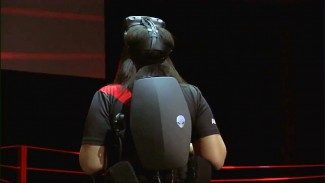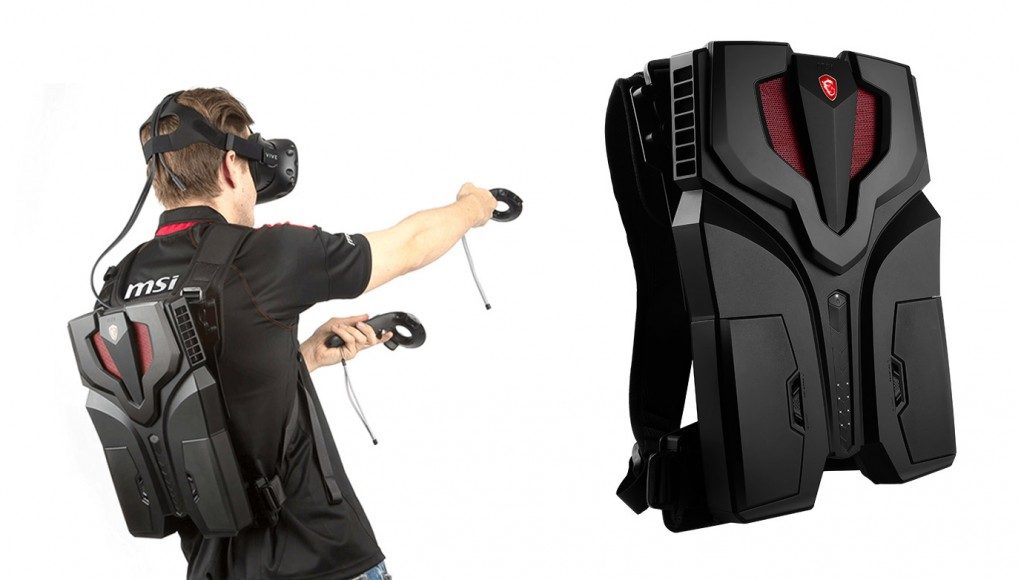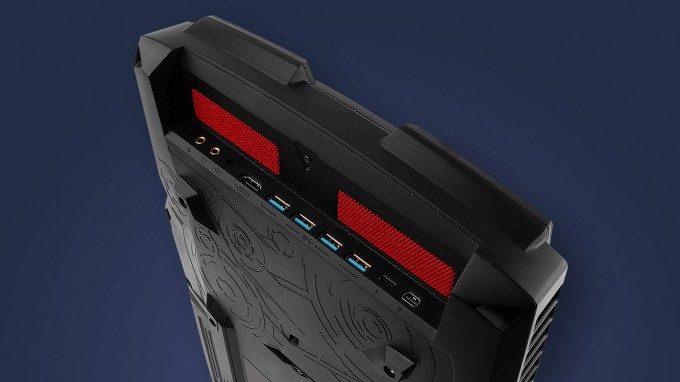The ‘VR One’ from MSI debuts at the Tokyo Game Show this week. The backpack provides tetherless VR gameplay powered by NVIDIA’s 10-series GPUs with a hot-swappable battery for extended VR gaming without a tether.
Each time we try mobile VR, its untethered advantage over high-end VR is painfully obvious. The cabling for tethered headsets is neater than it used to be, but even a single thin cable is one too many. You never completely forget about it, and it’s a bad idea if you do (indeed those who use an HTC Vive regularly tend to develop a sixth sense of where the cable might be, so they’re not stumbling over all the time). Rift users will certainly experience similar problems once more room-scale experiences become available with the upcoming Oculus Touch motion controllers.

One solution—besides wireless transmission technology which simply isn’t ready for VR yet—is to squeeze the PC (and a battery) into a backpack, so that you are carrying all the power needed for the VR experience on your person, and can move freely. We saw early attempts with small-form factor PCs or laptops with desktop-class GTX 980 GPUs crammed into backpacks, but they left much room for improvement.
MSI’s GTX 980-equipped ‘Backpack PC’ shown at Computex in May was probably the most complete prototype, but it was bulky, weighed around 12 pounds and had a 1 hour battery life. The ‘Omen X VR PC Pack’ from HP, unveiled around the same time, was much smaller and elegant, claiming to weigh under 10 pounds, but the GPU wasn’t revealed.
It’s likely that HP was waiting on Nvidia’s Pascal line which came with a huge step forward in portable GPU performance. At the Nvidia launch event for Pascal-equipped notebooks, I was very impressed by the VR performance of even the GTX 1060 found in some new thin-and-light form factor notebooks.
MSI’s new VR One backpack sports the faster GTX 1070 rather than a 1060 (given the weight, we presume the mobile version). It seems that was the sweet spot for performance vs weight and battery life; despite the powerful card, the VR One weighs an impressive 7.9 pounds (3.6kg), making it the lightest device of this kind so far, says MSI. And, crucially, a pair of hot-swappable batteries located conveniently on the outer shell of the unit provide at least 1.5 hours of battery life, with the ability to charge one while using the other, then switch them without turning off the backpack PC.
It’s worth noting that although the VR One has the relevant IO to support any PC headset, the untethered experience is only currently feasible with the HTC Vive, as the Rift’s tracking system requires at least one USB camera to be plugged into the PC and placed in a static position in the room.
Backpack solutions clearly highlight some of the benefits of the Vive’s Lighthouse tracking technology, as its base stations don’t need to be connected to the host PC. While you wouldn’t want to lie on your back or perform any extreme motions while wearing a PC, backpacks of this kind represent a step forward for VR mobility, and MSI’s VR One appears to be the first consumer-ready product of its kind.
One question we’re still wondering about is how MSI (and other VR backpack PC makers) expects users to interface with the VR One before they launch VR applications. Without a screen, it may be necessarily to hook the device up to a monitor, keyboard, and mouse before launching the VR experience, then unplug them all and plug in the VR headset to start playing. That seems incredibly cumbersome though, so it’s possible we may see some customized solution that automatically launches a VR environment upon boot.
Pricing and release date for the MSI VR One has yet to be announced, but we’re guessing it won’t be cheap (look to GTX 1070-equipped notebooks for a rough idea).








